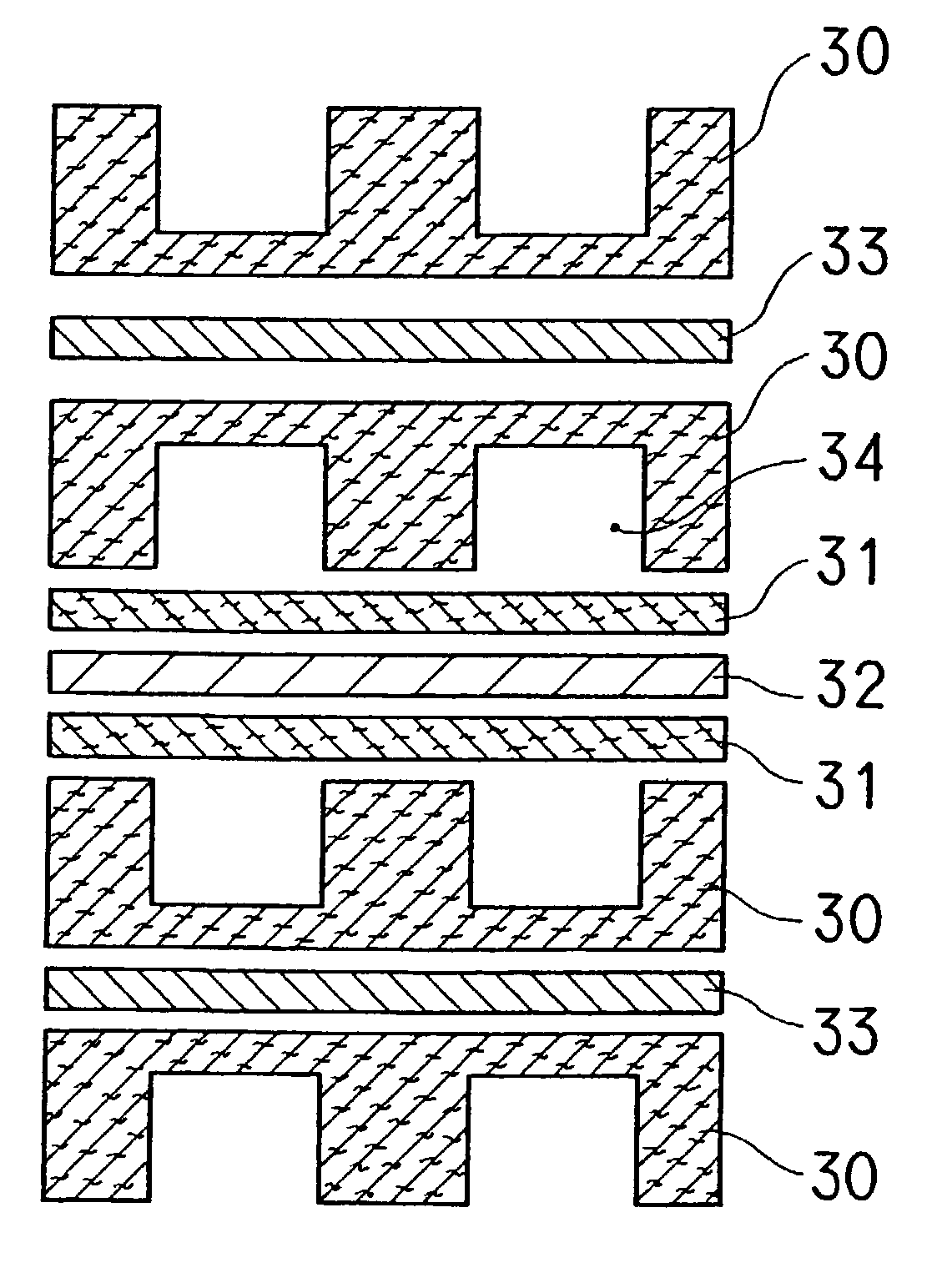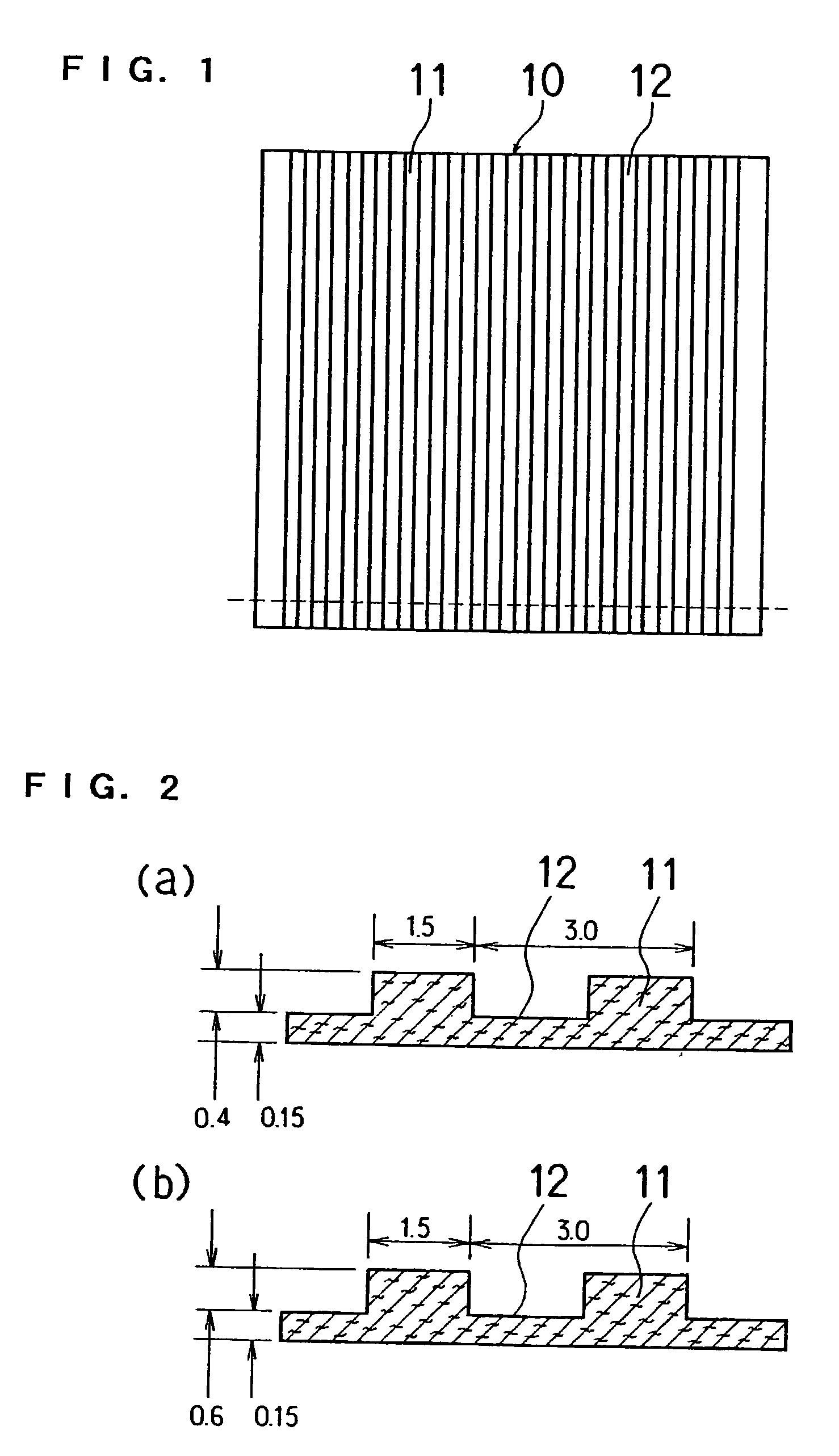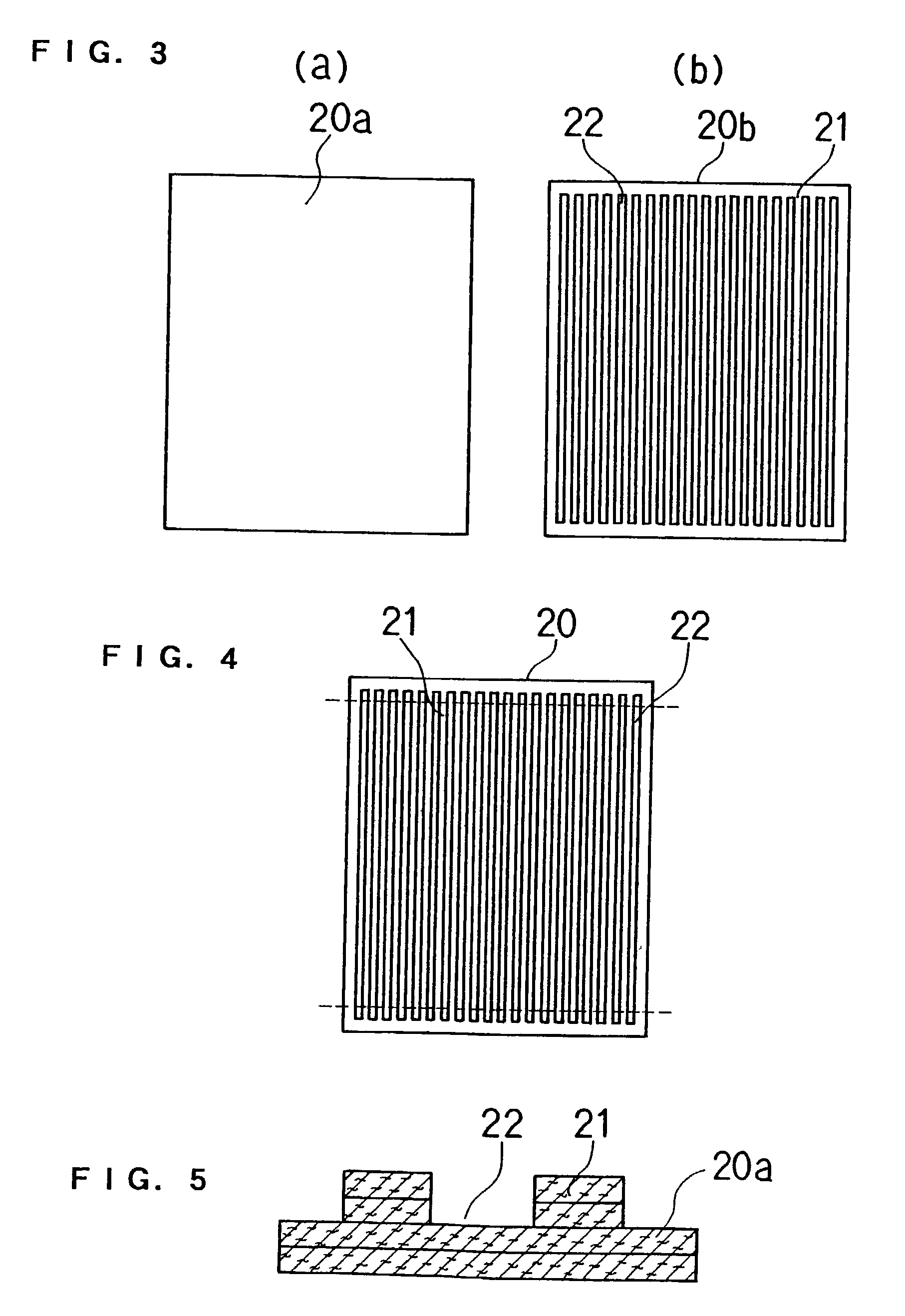High polymer electrolyte fuel cell
a fuel cell, high-polymer technology, applied in cell components, active material electrodes, electrochemical generators, etc., can solve the problems of hydrophilic porous electrodes clogged with water, likely to interfere with gas permeation, etc., to achieve the effect of sacrificing gas permeability and water repellency
- Summary
- Abstract
- Description
- Claims
- Application Information
AI Technical Summary
Benefits of technology
Problems solved by technology
Method used
Image
Examples
example 2
[0099] A mesophase pitch-based carbon fiber raw yarn (which was spun but had not been stabilized) was woven into a fabric with a thickness of 150 .mu.m, and a phenol-based carbon fiber raw yarn was sewn in the fabric to have a thickness of 600 .mu.m. The resulting fabric was graphitized after the stabilization and carbonization processes so as to produce an electrode as shown in FIG. 6. Thereafter, the fabric was activated by steam oxidation in a continuous furnace under the condition of 800.degree. C. and 240 seconds. The specific surface area and the hydrophilicity of a part that forms the bottom of the gas flow path and the side-wall part were evaluated before and after the activation, and the results of evaluation are shown in Table 2. As shown in Table 2, a significant increase was observed as a result of the activation, particularly, in the specific surface area and the hydrophilicity of the flow path's side-wall part made from the phenol-based fiber.
2 TABLE 2 Specific surface...
example 3
[0101] A PAN-based carbon fiber which had gone through up to the carbonization process was cut to a fiber length of 2 mm, and then the fiber was made into paper to form a sheet having a thickness of 50 .mu.m and 0.12 g / cm.sup.2 as the weight per unit area.
[0102] Thereafter, as shown in FIG. 3 and FIG. 4, three sheets which were not stamped and eight stamped sheets were joined together using an aqueous solution of carboxylmethyl cellulose as a binder while positioning them. The resulting sheet was graphitized at 2400.degree. C. to produce a single electrode. The stamped shape of sheet B had a groove width of 1.5 mm and a pitch of 3 mm.
[0103] For this single electrode, a hydrophilic treatment was applied to the side-wall part by using a technique shown in FIG. 11. Specifically, an ink was prepared by adding 25 parts by weight of acetylene black (manufactured by Denki Kagaku Kogyo K.K.), 15 parts by weight of silica gel (particle size: 10 to 30 .mu.m, JIS A grade) and 5 parts by weight...
example 4
[0104] After binding the following raw carbonized papers with a pitch-based binder, the resulting paper was graphitized at 2450.degree. C. under an inert gas atmosphere for three hours to fabricate an electrode sheet X1 composed of four layers.
[0105] First layer: mesophase pitch-based carbonized paper (fiber diameter of 12 .mu.m, fiber length of 5 mm, and a thickness of 150 .mu.m).
[0106] Second layer: highly elastic PAN-based carbonized paper (fiber diameter of 6.5 .mu.m, fiber length of 5 mm, and a thickness of 150 .mu.m).
[0107] Third layer: anisotropic pitch-based carbonized paper (fiber diameter of 13 .mu.m, fiber length of 2 mm, and a thickness of 80 .mu.m).
[0108] Fourth layer: phenol-based carbonized paper (fiber diameter of 11 .mu.m, fiber length of 2 mm, and a thickness of 80 .mu.m).
[0109] After adhering the above-mentioned sheet 80 to a glass for fixture, the sheet 80 was polished to expose the respective polished surfaces of the first layer 80a, second layer 80b, third laye...
PUM
 Login to View More
Login to View More Abstract
Description
Claims
Application Information
 Login to View More
Login to View More - R&D
- Intellectual Property
- Life Sciences
- Materials
- Tech Scout
- Unparalleled Data Quality
- Higher Quality Content
- 60% Fewer Hallucinations
Browse by: Latest US Patents, China's latest patents, Technical Efficacy Thesaurus, Application Domain, Technology Topic, Popular Technical Reports.
© 2025 PatSnap. All rights reserved.Legal|Privacy policy|Modern Slavery Act Transparency Statement|Sitemap|About US| Contact US: help@patsnap.com



